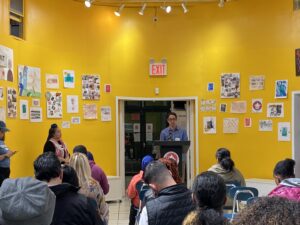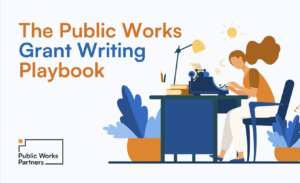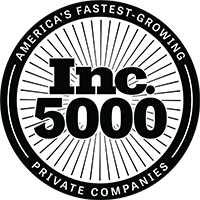Public Works Partners has always valued equity and inclusion. Still, amid the public health crisis, we are taking a moment to flex our values by finding ways to explicitly incorporate racial and cultural awareness into our day-to-day work and processes.
This summer, our team at Public Works Partners is conducting a comprehensive audit of our tools and processes to explicitly align them with our company values. Although we continue to successfully deliver best-in-class management consulting solutions to community-based organizations, we feel that continuous improvement and professional growth are critical, especially during these unprecedented times. Our goal is to flex our values by making our processes and tools more culturally competent.
Sounds simple, right? Not exactly.
- We have roughly 20 tools and standard operating procedures (SOPs) that we wanted to audit.
- We want to involve everyone in Public Works in the auditing process.
- We want to hold a quorum to discuss updates and changes.
- And we want to implement these changes to our day-to-day work seamlessly.
Our Approach
In true Public Works fashion, we turned to PROCESS WITH PURPOSE™ to come-up with a strengths-based approach to address the task at hand. Our approach consisted of four main pillars: fundamental understanding of cultural competency, interests and insights, collaboration and peer-to-peer learning, and strong project management. After some internal discussions, we came up with the following steps to explicitly integrate equity and inclusion into our tools and processes.
1. Begin with a conversation.
Like many of our client engagements, we started this project by holding a team meeting to understand the task at hand and the context of the project. By turning one of our monthly staff meetings into an open forum, we were able to candidly discuss, as a team, which of our current tools and processes are explicitly inclusive and which ones are not. We also used this moment to build a collective understanding of what cultural competency is and ways to integrate it into our work and individual roles. The collective understanding provided our team with a framework to guide the assessment of our existing tools and processes.
Pro tip: Hold an open forum to define cultural competency with your team to build a collective understanding and framework for the auditing exercise.
2. Build a work plan. Build the team.
As Project Managers, we are obsessed with our work plans and timelines. Similar to our client engagements, this project has a set of organizing principles to move the project forward, including a comprehensive work plan detailing the tools and SOPs we were auditing, who’s responsible for auditing them, and timeline for completing the audit. Since everyone in our firm is involved in the process, we created the work plan using Google Sheets to make it easy and readily accessible to all staff.
For the teams responsible for auditing, we selected individuals who are most familiar with each tool and SOP – they either use this specific tool or SOP all the time, or they have helped create them. We wanted to leverage everyone’s insights on how to make these tools and SOPs more inclusive based on their experience using them internally and externally.
Pro tip: Get organized. A work plan with clear deadlines helps to move the project forward. Without it, your team will be stuck in a loop.
3. Simplify, optimize usage, and present.
In small teams, we conduct a critical review of our existing tools and processes. During our audits, we provide recommendations on how we can align each tool and SOP with our company values. Our auditing methods vary depending on what is being reviewed and who is conducting them. Some opt for leveraging best practices from external resources, while some capitalize on their experience where our tools and SOPs excelled and failed.
After completing their audit, each team presents its findings and recommendations to everyone during our weekly Friday staff calls. The auditing team walks us through what they have done, additional recommended changes, and why these changes matter. These presentations are vital since it provides the auditing team with an achievable deadline, a point to validate their assumptions, and an opportunity to demonstrate the simplicity of incorporating these changes to our functions and day-to-day work.
Pro tip: Leverage existing team meetings as potential touch points since they’re already on your calendars and with organizing the auditing deadlines.
4. Implement and improve.
After each Friday call, the auditing team incorporates and implements the changes made to the tools and SOPs. They then circulate the revised version of the document via email, along with the location of the document in our shared drive.
Our commitment to inclusivity, equity, and cultural competency does not end here. Continuous improvement is another ethos that our firm values. When the auditing exercise is complete, we will continue to strive to improve our practices based on lessons learned from our peers, colleagues, and of course, our clients. We will continue to adjust our tools and processes to ensure that everyone we work with and work for is involved and part of solution development.
Pro tip: As your team expands their knowledge on diversity, equity and inclusion, adjust your tools and processes accordingly. Professional and personal growth is never-ending; it just gets better in time.
What’s next
Our team is committed to and excited about this exercise. We have grown as a team and found ways to be innovative and thoughtful about how we work with each other, our clients, and the community we serve. In the coming months, we will highlight some of the changes we have made, including in our writing guidelines, branding and style guide, and on-boarding processes to be more sensitive and culturally adept.
If your company or organization is looking to do a similar project, feel free to follow our steps. Our guidelines are replicable: you can follow them to the teeth or use it as a foundation to your organization’s framework. Also, please keep us posted via LinkedIn and Twitter. We’d love to hear how your teams are aligning your tools and processes to your company values.





 Public Works Partners is a WBE/DBE-certified urban planning and consulting firm. Our expertise lies in creating innovative, equitable, and sustainable solutions to complex problems.
Public Works Partners is a WBE/DBE-certified urban planning and consulting firm. Our expertise lies in creating innovative, equitable, and sustainable solutions to complex problems.